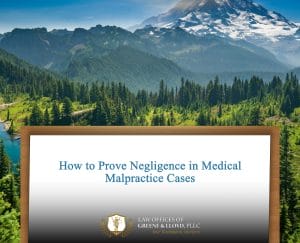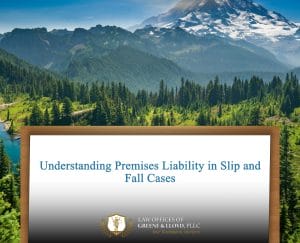## Understanding the Process of Proving Medical Negligence
Proving medical negligence is a critical element in pursuing a medical malpractice case. At its core, this legal process involves demonstrating that a medical professional failed to provide the standard of care that a reasonably competent practitioner would have provided under similar circumstances. Central to this inquiry is the established legal threshold of duty, breach, causation, and damages. By illustrating how these components interconnect, a claimant can effectively build a compelling case against a healthcare provider.
The concept of negligence is multi-faceted, and medical negligence specifically refers to situations where a healthcare provider’s actions—or lack thereof—fall short of expected professional care standards. To prove medical negligence, one must first establish the relationship between the provider and the patient, otherwise known as the duty of care. This exists when a patient confers upon a medical professional the authority to render care. Once duty is established, the next step involves demonstrating that the provider’s actions deviated significantly from accepted medical practices, resulting in harm to the patient.
Additionally, mere dissatisfaction with medical outcomes does not equate to negligence. A successful claim hinges on the ability to show that the negligence led directly to significant injury or damages. This requires demonstrating not just that a mistake was made, but that it significantly impacted the patient’s health or quality of life. The complexities surrounding this issue necessitate an informed approach that is rooted in legal knowledge and practical insights.
## Defining Proving Medical Negligence
To effectively address the topic of proving medical negligence, it is essential first to define the term itself. Medical negligence occurs when a healthcare provider fails to perform their duties to the standard expected of their profession, leading to unintended injuries or harm to a patient. This could manifest in various forms, from misdiagnosis and surgical errors to inadequate follow-up care or prescribing the wrong medication. Each of these situations underscores the importance of adhering to established medical guidelines.
Proving medical negligence is not merely about highlighting an error; it involves a meticulous examination of the actions taken by healthcare professionals against accepted medical practices. The legal system requires the injured party to provide substantial evidence showing that the provider’s actions were not just wrong but that they fell below the customary threshold of care expected within the medical community. This often necessitates expert testimony from other medical professionals to support claims that the care received was inadequate.
Moreover, one of the significant challenges surrounding proving medical negligence is the need for clarity in establishing causation. The patient must convincingly demonstrate that the negligence directly caused their injury, which often requires linking the alleged substandard care to the resultant harm. This often complicates cases, as various factors may play a role in a patient’s condition that are unrelated to the provider’s actions.
## Significance of Addressing Medical Negligence
The implications of proving medical negligence are profound, affecting not only the individual patient and their family but also influencing broader aspects of healthcare and public accountability. When medical negligence is established and addressed, it serves as a crucial reminder of the importance of adherence to professional standards within the healthcare industry. This helps ensure that accountability is upheld, fostering an environment where medical practitioners strive for excellence in care delivery.
From a patient’s perspective, successfully proving medical negligence can lead to critical compensation for medical expenses, lost wages, and pain and suffering. Financial recompense can aid recovery and provide families with the resources necessary to manage the hardships stemming from the negligence. However, beyond individual repercussions, the systemic effects promote a culture of safety and quality assurance in healthcare practices.
Moreover, addressing medical negligence through legal channels may encourage policy changes within healthcare institutions, pushing for improved training, protocols, and systems to minimize risks. By bringing attention to negligent practices, systemic flaws may be identified and rectified, contributing to overall patient safety and quality of care. Ultimately, significantly tackling the issue resonates well beyond individual cases, fostering a culture of accountability that can enhance the standards of healthcare as a whole.
## Legal Framework Surrounding Proving Medical Negligence
Navigating the legal landscape of proving medical negligence requires an understanding of the pertinent laws, case precedents, and jurisdictional nuances that govern medical malpractice. In Washington State, medical malpractice claims are dictated by a combination of statutory law and case law, providing a framework upon which personal injury claims against healthcare professionals are built. These laws defer significantly to the standards of the medical community, necessitating expert testimony to establish the relevant benchmarks of care.
The legal framework typically encompasses the necessary elements of duty, breach, causation, and damages, forming a cohesive structure for claimants seeking to establish medical negligence. Individuals alleging malpractice must show that the healthcare provider owed a duty to the patient, that they breached this duty by failing to adhere to the requisite standard of care, and that the breach directly resulted in quantifiable harm to the patient. Furthermore, the claimant must substantiate their claims with compelling evidence, such as medical records, expert opinions, and sometimes witness accounts.
Additionally, Washington law imposes specific procedural requirements, such as statutes of limitations, which dictate the time frame within which an individual can file a claim. Generally, in Washington, the statute of limitations for medical malpractice claims is three years from the date of the incident or one year from the date the patient discovered or reasonably should have discovered the harm, whichever is shorter. Guidelines surrounding damages also play a critical role, as there may be caps on non-economic damages, influencing how claims are structured and argued.
## Real-World Cases Illustrating Proving Medical Negligence
Real-world examples provide vital context to the concept of proving medical negligence, helping to illuminate how this process functions in practice. A notable case involved a patient who underwent laparoscopic surgery but subsequently developed a severe infection due to unsterile instruments used during the procedure. In this situation, the patient was able to prove that the surgeon’s surgical team deviated from the standard procedure for ensuring sterilization, thereby establishing both a breach of duty and a direct causative link to the harm suffered.
Another compelling case involved a misdiagnosis where a radiologist failed to identify cancerous lesions in a patient’s imaging results. The delayed diagnosis resulted in the patient undergoing less effective treatment methods, leading to significant health deterioration. In this instance, medical experts were brought in to testify regarding the expected standards for radiological evaluations, ultimately showcasing the negligence of the medical provider in failing to adhere to this standard.
In a third example, a pediatrician’s oversight resulted in the incorrect prescription of medication for a child diagnosed with ADHD. The child experienced adverse effects that necessitated hospitalization due to the severity of the reaction. The case hinged on demonstrating not only the physician’s duty to prescribe medication accurately but also the catastrophic consequences resulting from failing to do so. Each of these cases serves to illustrate the various facets of proving medical negligence, showcasing the diverse ways in which healthcare providers can fall short and the resultant legal implications.
## Practical Steps in Pursuing a Medical Negligence Case
Pursuing a medical negligence case involves several critical steps that aspiring claimants must consider to enhance their prospects of success. One of the first actions to undertake is to obtain all relevant medical records. This documentation is essential for any effort to establish a timeline of care and identify potentially negligent actions taken by healthcare providers. These records can serve as concrete evidence to support claims that negligence occurred, making them foundational to the process.
Engaging an experienced attorney specializing in medical malpractice is another vital step. An attorney can offer insights into the complexities of medical malpractice law and help navigate the legal landscape, ensuring adherence to procedural requirements. They can also assist in gathering evidence, consulting with medical experts, and formulating a strategic approach tailored to the specific circumstances of the case. Having professional legal representation can be instrumental in bolstering a claim and advocating effectively on behalf of the injured party.
Another practical step is to focus on gathering witness testimony where applicable. This could include statements from fellow patients, staff members, or other healthcare providers who can substantiate the claims being made. Additionally, documenting personal experiences, health changes, and interactions with healthcare professionals can aid in crafting a comprehensive narrative of the circumstances surrounding the alleged negligence, supporting the overall claim for damages.
## Common Pitfalls in Proving Medical Negligence
Recognizing the common pitfalls in proving medical negligence is essential for claimants to avoid jeopardizing their cases. One frequent misstep lies in the reluctance to seek expert medical testimony. Many claimants may underestimate the importance of expert opinions in establishing the standard of care that the healthcare provider was expected to meet. Neglecting to secure appropriate expert testimony can weaken a case significantly, as the legal framework often requires substantiation from a qualified professional to demonstrate that negligence occurred.
Another common mistake involves the lack of thorough documentation. Individuals pursuing claims sometimes overlook the necessity of maintaining detailed records of their medical treatment, experiences, and conditions. Accurate and complete documentation serves as invaluable evidence; failing to keep thorough records can undermine the credibility of a claim. Prospective claimants should consistently document interactions with healthcare providers, changes in health status, and treatments received to build a robust record of their case.
Additionally, misjudging the timeline for filing a claim can pose significant challenges. Many individuals are unaware of the statutes of limitations governing medical negligence claims, which can vary significantly by jurisdiction. Delaying action not only risks the loss of the right to pursue a valid claim but can also complicate evidence gathering as time passes. Awareness of the specific legal time frames is crucial for initiating a claim within permissible limits and protecting one’s rights.
## Timing for Legal Consultation in Medical Negligence Cases
Recognizing when to consult an attorney about a suspected medical negligence case is critical for effective legal navigations. While it may be tempting for individuals to wait until they fully understand their situation or until symptoms manifest, early engagement with an experienced attorney can provide valuable insights into the complexities of medical negligence law. Consuming time before consulting legal professionals can result in missed opportunities or weakened cases due to the loss of critical evidence.
It’s advisable to consult an attorney as soon as there is a suspicion of negligence. If a patient experiences an adverse medical outcome, is uncertain about the quality of care received, or has questions regarding the sufficiency of treatment, an attorney can help determine whether the circumstances warrant legal action. Prompt consultation allows for a comprehensive review of medical records and a formal assessment of whether the established elements of negligence are present.
Additionally, an early legal consultation can help individuals understand their rights and the available options for pursuing a claim. This foundational knowledge equips prospective claimants with information regarding the potential outcomes and the legal landscape surrounding their situations, thereby empowering effective decision-making throughout the process. Timeliness in seeking legal counsel is essential, as it often shapes the trajectory and success of a medical negligence claim.
## Advantages of Engaging Legal Representation
The benefits of engaging legal representation in medical negligence cases are manifold, making it a strategic choice for individuals seeking justice. One of the primary advantages is the expertise provided by attorneys who specialize in medical malpractice cases. They possess a deep understanding of the intricacies of medical negligence law, enabling them to navigate the complexities of litigation efficiently. Their knowledge encompasses critical areas, such as procedural requirements and applicable legal standards, which are vital for successfully establishing a claim.
Additionally, legal representation can enhance the overall strength of a claimant’s case. Attorneys are skilled in gathering evidence, consulting relevant medical experts, and leveraging their networks to build a comprehensive strategy tailored to meet the unique circumstances of each case. This approach can significantly improve the chances of proving medical negligence and obtaining just compensation.
Moreover, having legal representation often alleviates the emotional stress associated with pursuing a medical negligence claim. The litigation process can be daunting, particularly for individuals recovering from medical issues or trauma. By entrusting their case to competent legal representatives, claimants can focus on their recovery while ensuring that their legal interests are diligently pursued. This support plays a crucial role in fostering a sense of security for individuals navigating challenging situations.
## The Role of Law Offices of Greene & Lloyd, PLLC
Law Offices of Greene & Lloyd, PLLC stands as a distinguished advocate for clients navigating the complexities of proving medical negligence in Washington State. With a proven track record in medical malpractice cases, this firm emphasizes a client-centric approach that places individual needs and outcomes at the forefront. The experienced attorneys work diligently to ensure that clients receive the guidance and support they deserve, leveraging their extensive knowledge of the intricacies of medical negligence law.
The firm’s attorneys utilize a comprehensive strategy, combining rigorous legal knowledge with a deep understanding of the healthcare landscape. They engage qualified medical experts to support their clients’ cases, ensuring that claims are substantiated with the necessary authority and reliability. This focus on thoroughness fosters a strong foundation for proving negligence, as they gather and analyze evidence methodically, building compelling arguments on behalf of their clients.
In addition to their commitment to client advocacy, the Law Offices of Greene & Lloyd, PLLC recognizes the emotional toll that medical negligence claims can impose on individuals and their families. They prioritize compassionate representation, providing a supportive environment that reassures clients as they navigate the intricacies of the legal process. This empathetic approach, coupled with a dedication to achieving optimal results, positions the firm as an invaluable resource for those seeking justice in medical malpractice cases.
## Frequently Asked Questions About Proving Medical Negligence
## Additional Resources on Proving Medical Negligence
In pursuit of additional information and understanding surrounding proving medical negligence, consider consulting relevant literature and organizations. Resources such as the American Medical Association (AMA) and the American Bar Association (ABA) provide valuable insights into medical standards, ethical concerns, and legal frameworks. These organizations emphasize the evolving nature of healthcare and underscore the importance of maintaining standards that uphold patient rights and safety.
Moreover, reputable websites dedicated to medical malpractice law can serve as informative platforms detailing legal processes, providing FAQs, and elucidating potential outcomes. Online platforms often offer similar cases that can further illuminate your understanding and readiness to navigate your own situation. Engaging with community resources, such as support groups for victims of medical negligence, can also provide emotional support as well as informational resources relevant to your experience.
Additionally, academic institutions and healthcare organizations routinely conduct research on patient safety, medical errors, and the implications of negligence, contributing to the broader knowledge base surrounding healthcare practices. Engaging with scholarly articles, medical journals, and research studies can offer insights into how proving medical negligence is approached within various contexts, enhancing your understanding of both the legal and healthcare landscapes.




